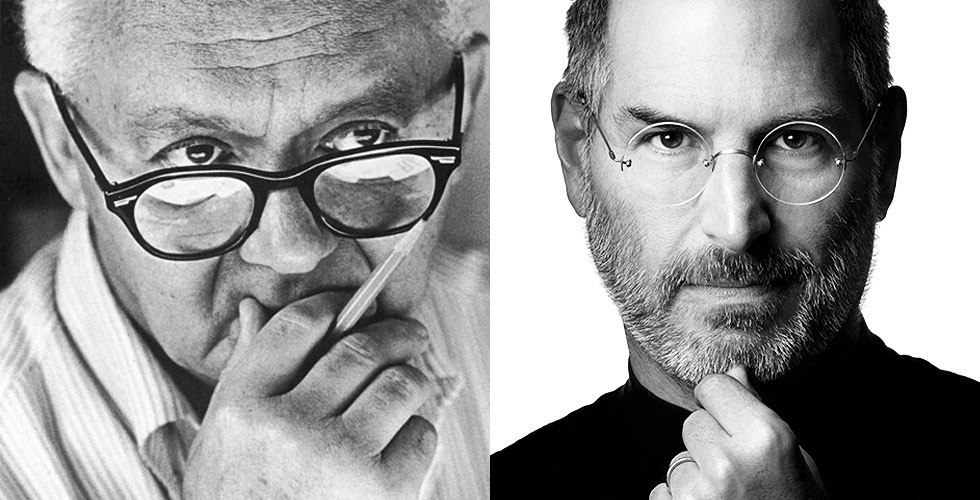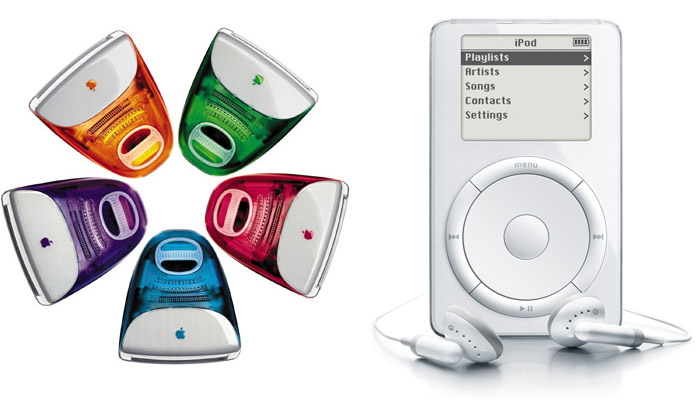Steve Jobs and Paul Rand: The impact of confidence
Comments: +
September 26 2011

Steve Jobs’ recent departure from Apple was met with sadness and nostalgia within the design community. And rightly so. Jobs had a unique appreciation for the value of design and allowed designers to flourish in a way that is rarely seen in business.
This mutual respect led to some of the most beautiful industrial design and revolutionary products in human history. Talented designers like Jonathan Ive and others, serendipitously met one of the most visionary CEOs in history. This allowed designers to create products, experiences, and interactions based on what was important to the people using them. It doesn’t seem revolutionary, but the trust and freedom offered by Apple stands apart in a world where designers are often forced to base their designs on what is important to a committee and to the fearful levels of corporate structure.

Apple’s case study is frequently cited by businesses who ask for “clean and modern, like Apple” only to turn around and request less white space or a bigger logo. Unsurprisingly, most CEOs are not visionaries. They don’t trust in the experts they hire, especially designers, who seem to beg for micromanagement with a built-in process of showing many options and requesting multiple rounds of revisions and approvals.
This practice was frequently criticized by one of graphic design’s most legendary figures, Paul Rand, who wrote, “The designer who voluntarily presents his client with a batch of layouts does so not out prolificacy, but out of uncertainty or fear. He thus encourages the client to assume the role of referee.”
Paul Rand’s idea that the expert chooses the best solution was seen firsthand by Steve Jobs when he hired Rand to create the corporate identity for his company NeXT.


Later interviewed about their work together, Jobs recalled this exchange:
I asked him if he would come up with a few options, and he said, ‘No, I will solve your problem for you. And you will pay me.’
Video: An interview with Steve Jobs about working with Paul Rand, by Doug Evans and Alan Pottasch in 1993
Though taken aback, it is clear that Jobs came to respect Rand and rely on his decisions. It’s hard not to wonder if the shift in perspective didn’t stay with Steve Jobs in the ventures that followed. With a unique appreciation for graphic design (it is reported that he once lectured his staff on the importance of typography) Jobs also recognized great talent, calling Paul Rand “the greatest living graphic designer” before his death in 1996.
Paul Rand took issue with leaders who didn't step up to the plate.
…[it’s] the insecure client who depends on informal office surveys and pseudo-scientific research to deal with questions that are unanswerable and answers that are questionable.
But, he also blamed mediocrity on his own community of graphic designers, encouraging them to defend their role as experts and stand behind the solution they think is the right one.
Steve Jobs seemed to take both lessons with him as he journeyed forward. While he brought bold, visionary leadership to every product, he carefully chose designers and gave them the power to make choices.

Steve Jobs worked with many prodigious talents. These meeting of the minds were not by accident, but by careful design. A moment of impact between a legend of industry and a legend of graphic design stands as a marker of a collaboration that undoubtedly shaped the things to come.
Lest one gets misty eyed about the kismet of it all, let’s remind ourselves that visionary leaders don’t often accidentally ‘bump into’ great talent, but carefully seek it out.
Like any talent, you don't find a good designer by asking for the one who’ll do it the cheapest or the one who will do it in two weeks instead of four. You find the designer that you trust enough to call an ‘expert.’ A designer makes only the amount of impact as the confidence they are given.
Interviewer: “Was he the first designer that you approached?”
Steve Jobs: “He was the only one we approached.”
Josh Smith is a graphic designer and co-founder of idsgn. He lives and works in NYC. You can follow him at @joshsmithnyc
Filed under: branding
Comments